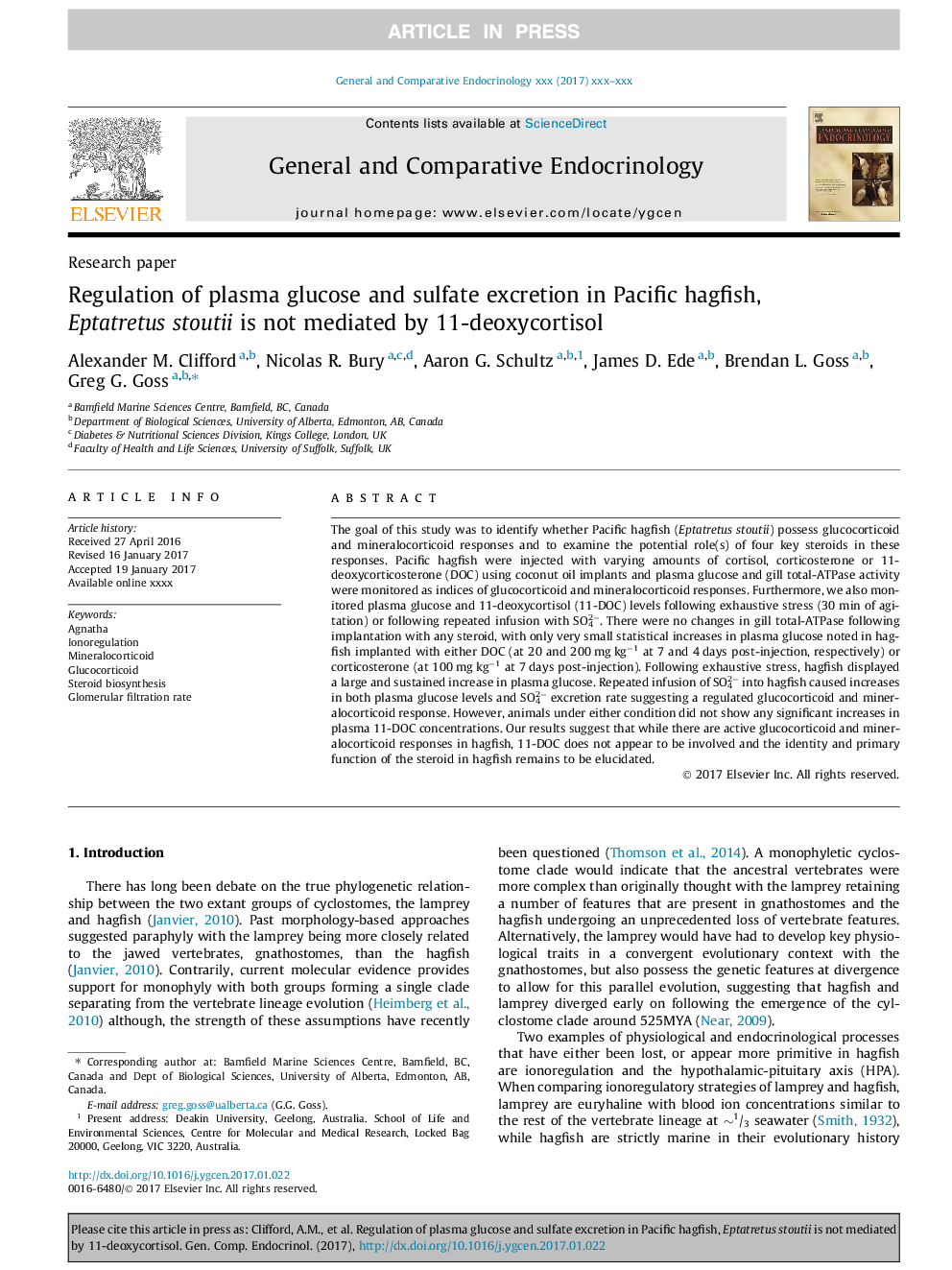| Article ID | Journal | Published Year | Pages | File Type |
|---|---|---|---|---|
| 5587788 | General and Comparative Endocrinology | 2017 | 9 Pages |
Abstract
The goal of this study was to identify whether Pacific hagfish (Eptatretus stoutii) possess glucocorticoid and mineralocorticoid responses and to examine the potential role(s) of four key steroids in these responses. Pacific hagfish were injected with varying amounts of cortisol, corticosterone or 11-deoxycorticosterone (DOC) using coconut oil implants and plasma glucose and gill total-ATPase activity were monitored as indices of glucocorticoid and mineralocorticoid responses. Furthermore, we also monitored plasma glucose and 11-deoxycortisol (11-DOC) levels following exhaustive stress (30 min of agitation) or following repeated infusion with SO42â. There were no changes in gill total-ATPase following implantation with any steroid, with only very small statistical increases in plasma glucose noted in hagfish implanted with either DOC (at 20 and 200 mg kgâ1 at 7 and 4 days post-injection, respectively) or corticosterone (at 100 mg kgâ1 at 7 days post-injection). Following exhaustive stress, hagfish displayed a large and sustained increase in plasma glucose. Repeated infusion of SO42â into hagfish caused increases in both plasma glucose levels and SO42â excretion rate suggesting a regulated glucocorticoid and mineralocorticoid response. However, animals under either condition did not show any significant increases in plasma 11-DOC concentrations. Our results suggest that while there are active glucocorticoid and mineralocorticoid responses in hagfish, 11-DOC does not appear to be involved and the identity and primary function of the steroid in hagfish remains to be elucidated.
Keywords
Related Topics
Life Sciences
Biochemistry, Genetics and Molecular Biology
Endocrinology
Authors
Alexander M. Clifford, Nicolas R. Bury, Aaron G. Schultz, James D. Ede, Brendan L. Goss, Greg G. Goss,
